View from Panorama Point along the Badlands Park Loop Road.
The Badlands National Park is located in soutwestern South Dakota, U.S., and protects nearly 1.000 square kilometers of sharply eroded buttes and pinnacles, along with the largest undisturbed mixed grass prairie in the United States. The National Park Service manages the park, with the South Unit being co-managed with the Oglala Lakota tribe.
The magnificent Sheep Mountain Table Overlook is situated in the South Unit of Badlands National Park.
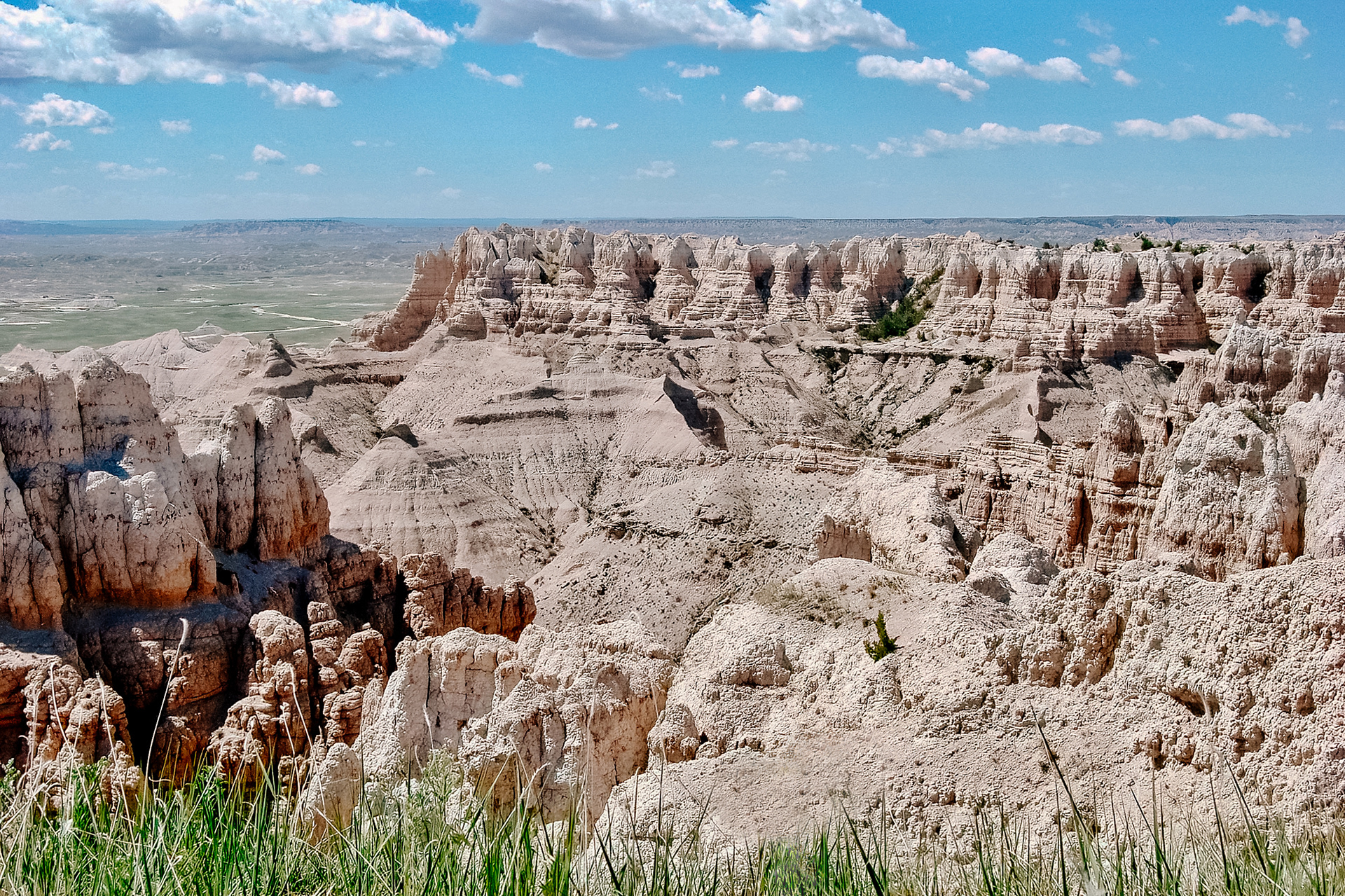
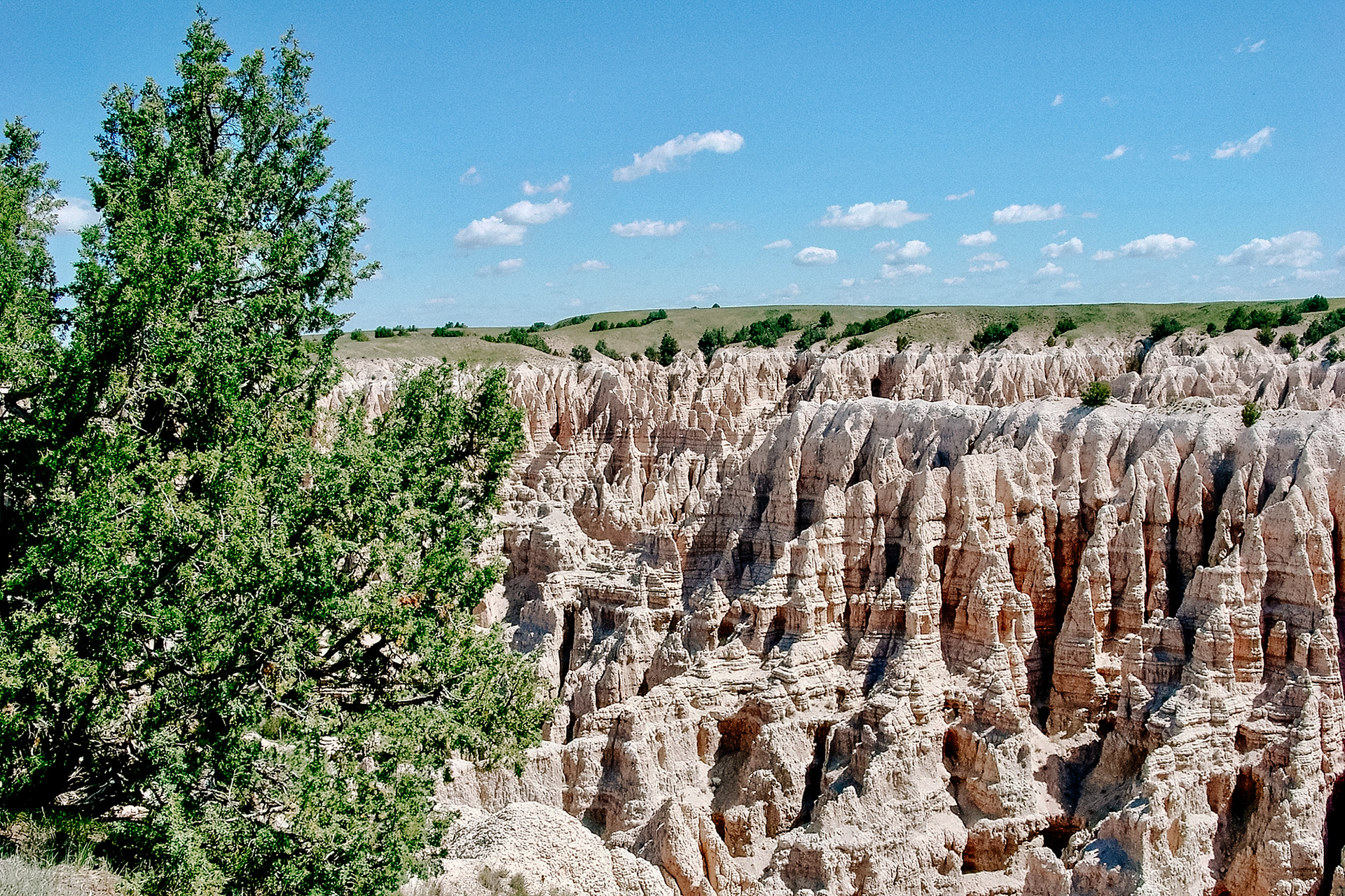
Extreme temperatures, lack of water, and the exposed rugged terrain led to the name "Badlands". French-Canadian fur trappers called the region "les mauvaises terres pour traverser," or "bad lands to travel through."
The Badlands Park Loop Road, Highway 240, leads through the great landscape.
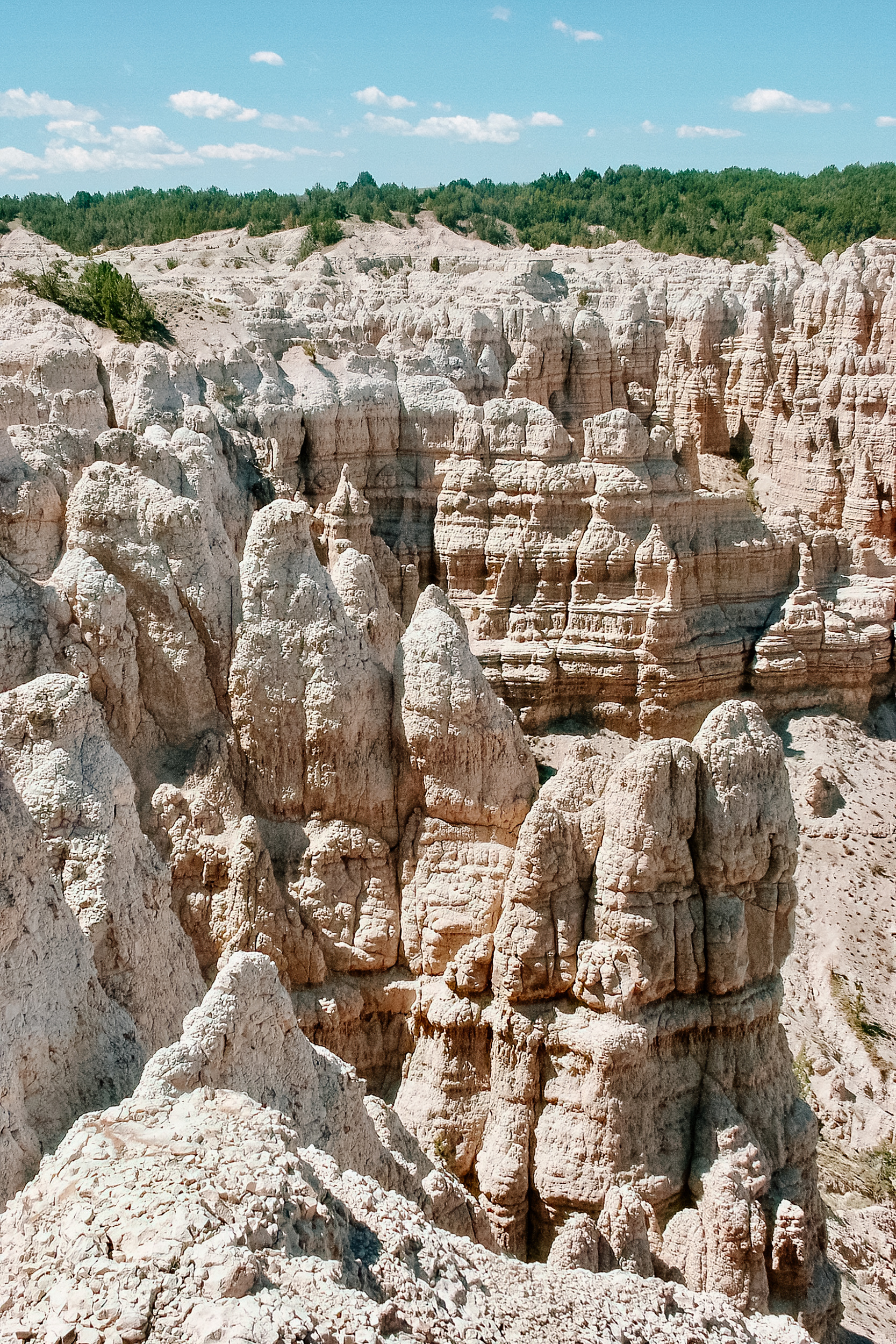
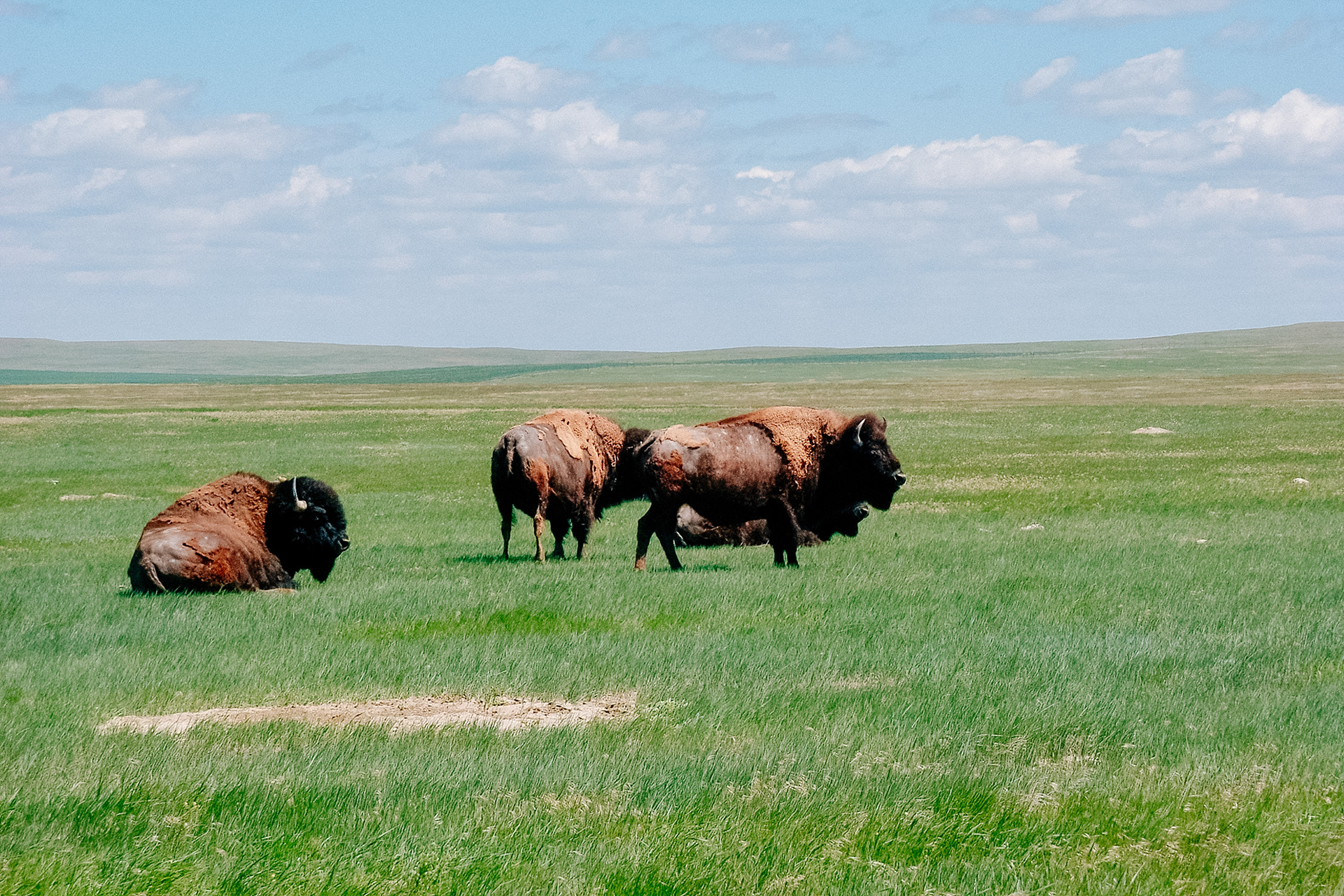
From a geological point of view, Badlands are a type of dry terrain where softer sedimentary rocks and clay-rich soils have been extensively eroded by wind and water.
Weathering is when rocks break apart; erosion is when stuff starts to move. You can experience both nearly everywhere in Badlands National Park.
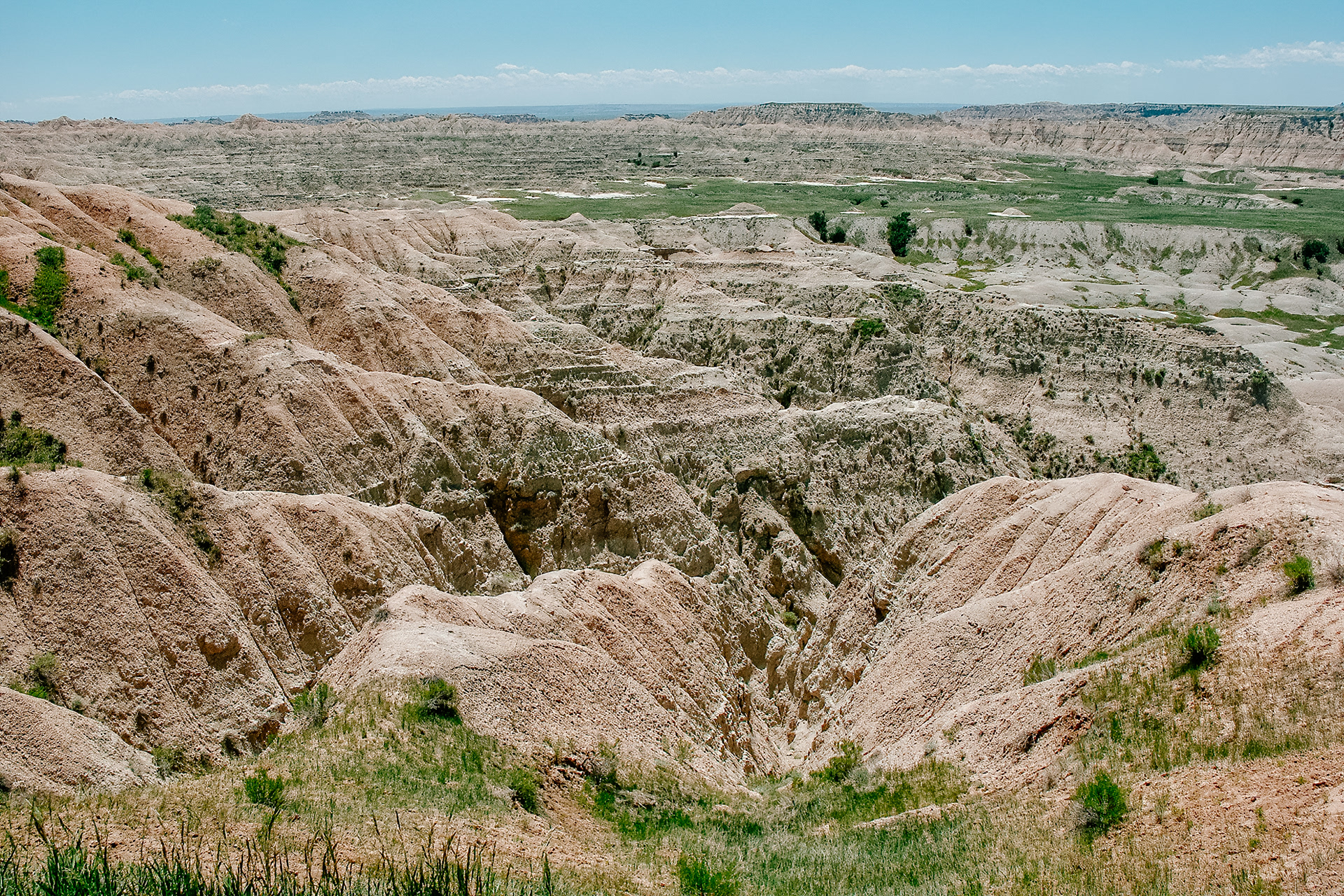
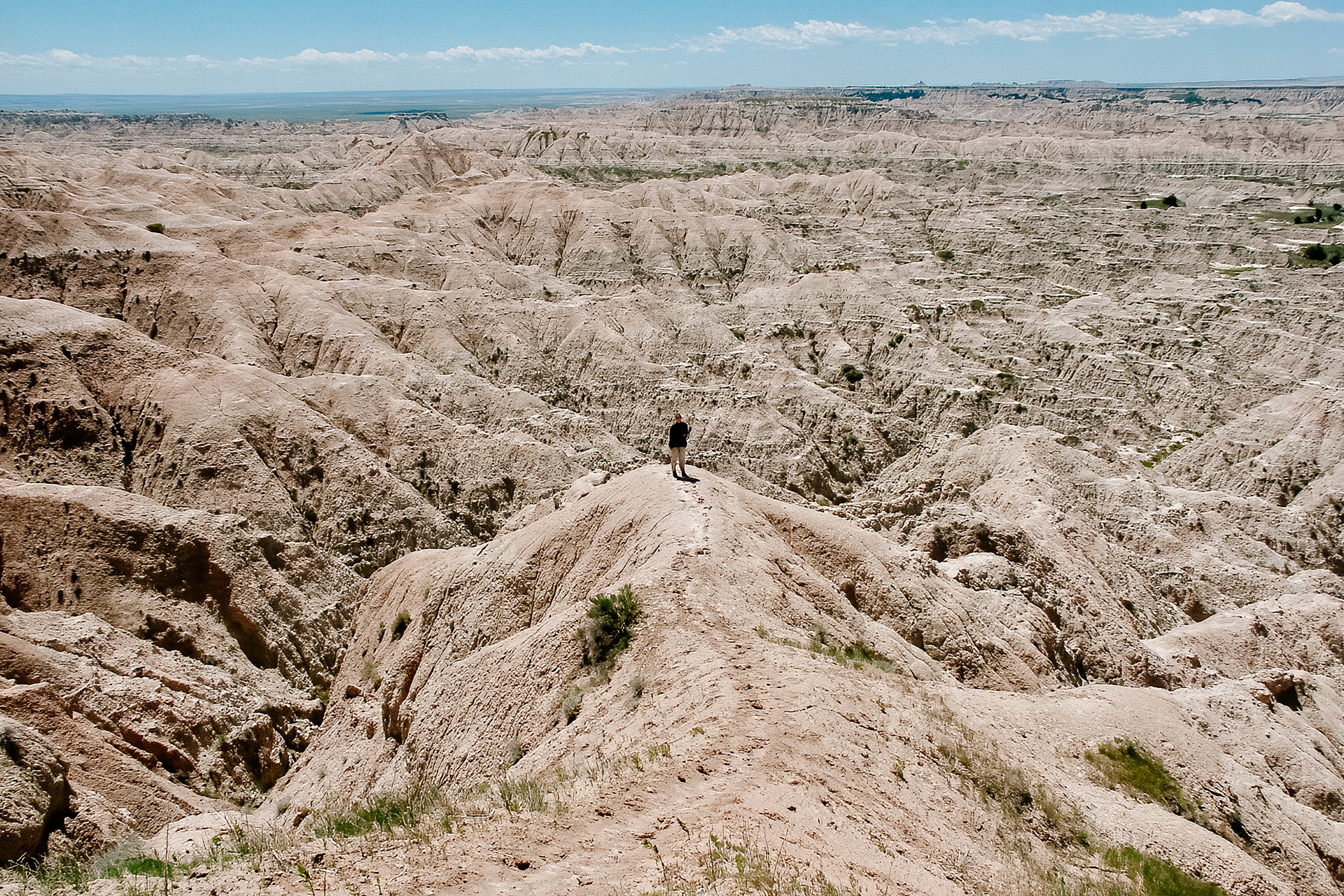
"About 75 million years ago a shallow sea covered the Great Plains region. In today’s Badlands the bottom of that sea appears as a grayish-black sedimentary rock called Pierre (peer) shale. This layer is a rich source of fossils. A variety of fossilized animals have been found in the Park from these sea creatures that sank to the bottom of the sea when they died (…)" – www.blackhillsbadlands.com
The Yellow Mounds' colour comes from fossil soils, called paleosols, that have weathered and changed colour when exposed to the sun.
Most visitors to Badlands National Park drive the Park Loop Road (Highway 240) as part of their visit. There are several viewpoints along the road. Hiking trails begin near the Ben Reifel Visitor Center, for example the Notch Trail with it's famous ladder (pictures below).
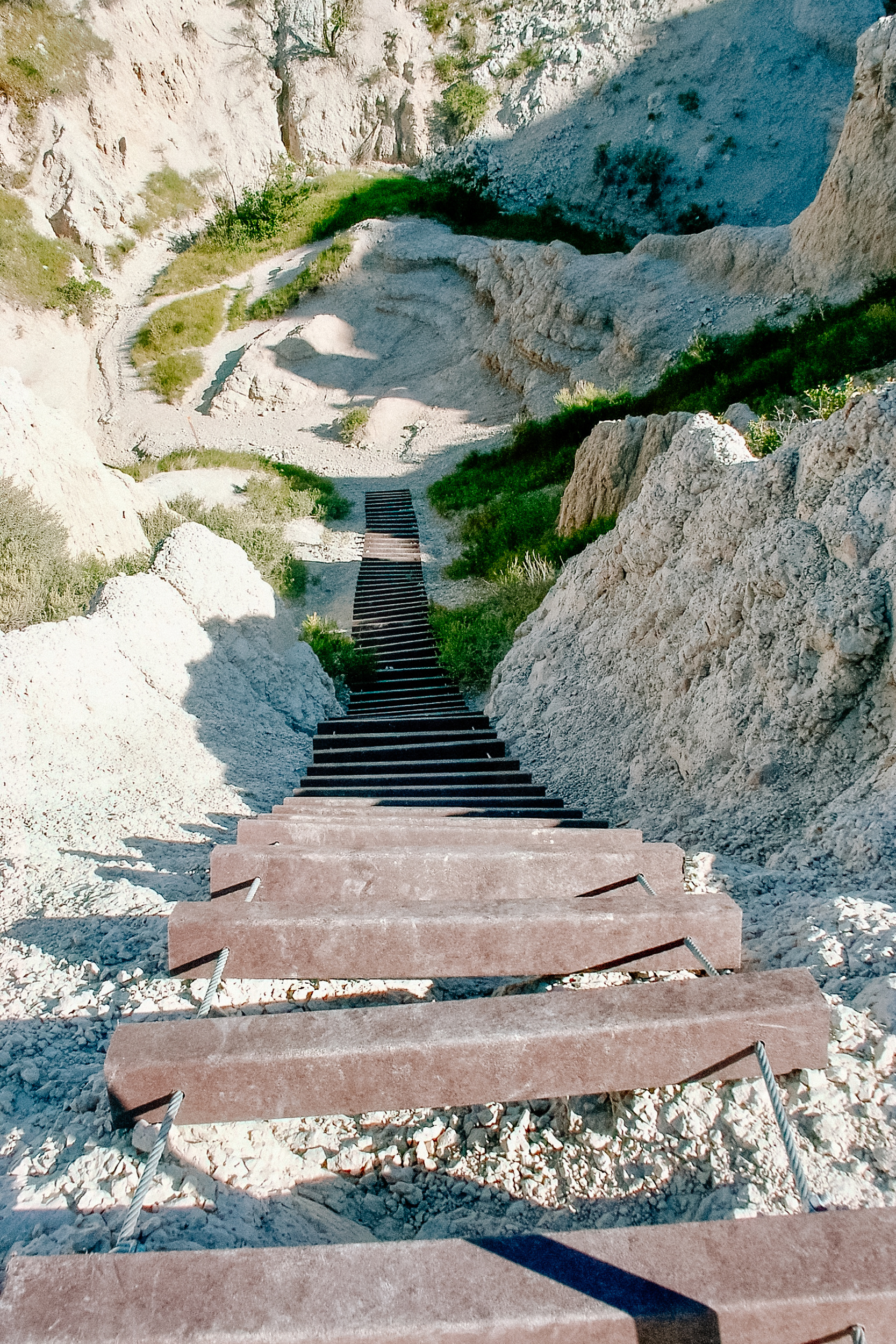
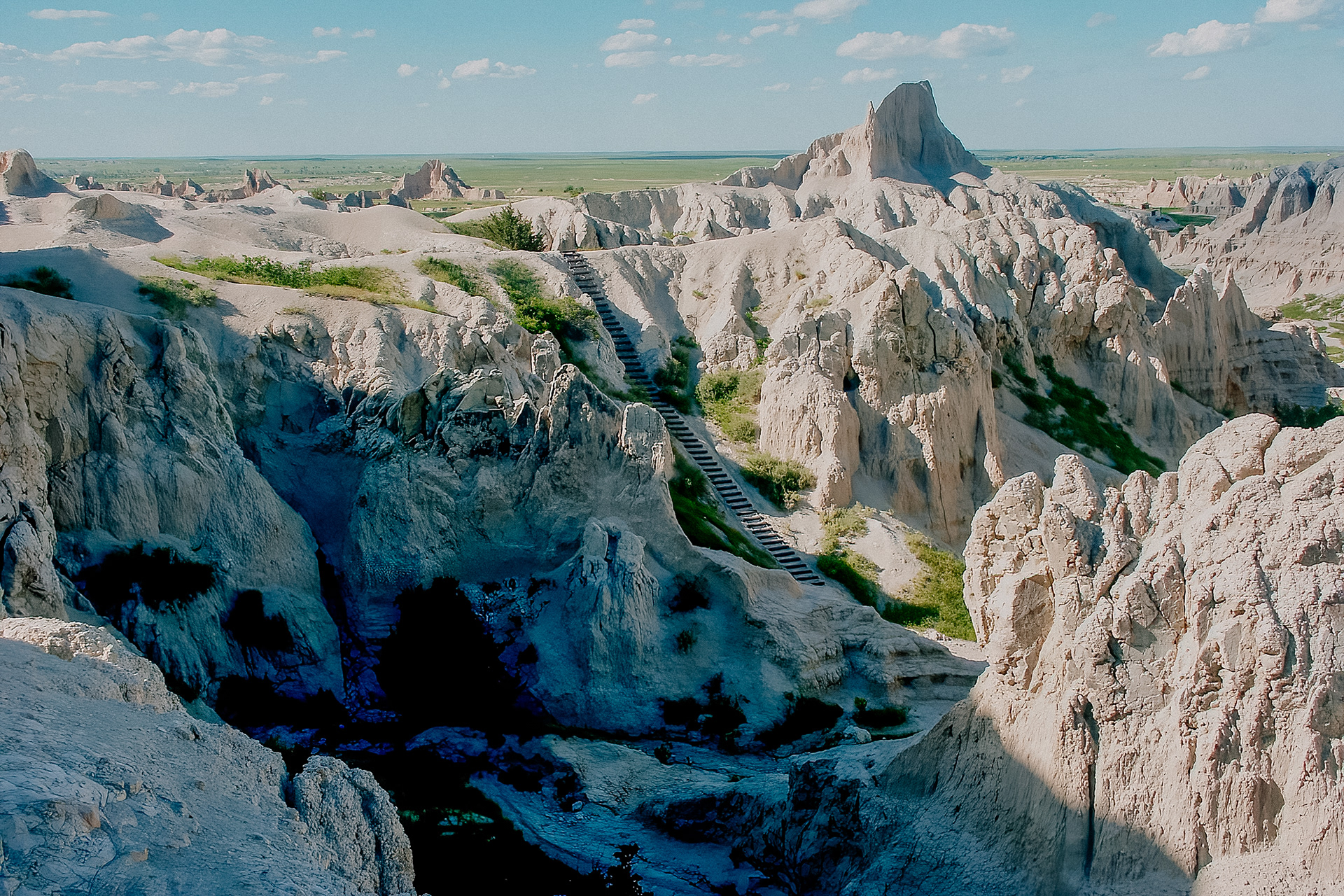
Along the Castle Trail of Badlands National Park.
The Badlands of South Dakota seem to be a magical place. At the end of the 19th century, the Sioux Indians used the area as the site of the Ghost Dance, a ceremony to revive the souls of buffalo and the dead. After the last dance in 1890, the U.S. banned the ritual, but it was revived for a time by the Red Power Movement, a movement to restore Indian rights that began in the 1960s.